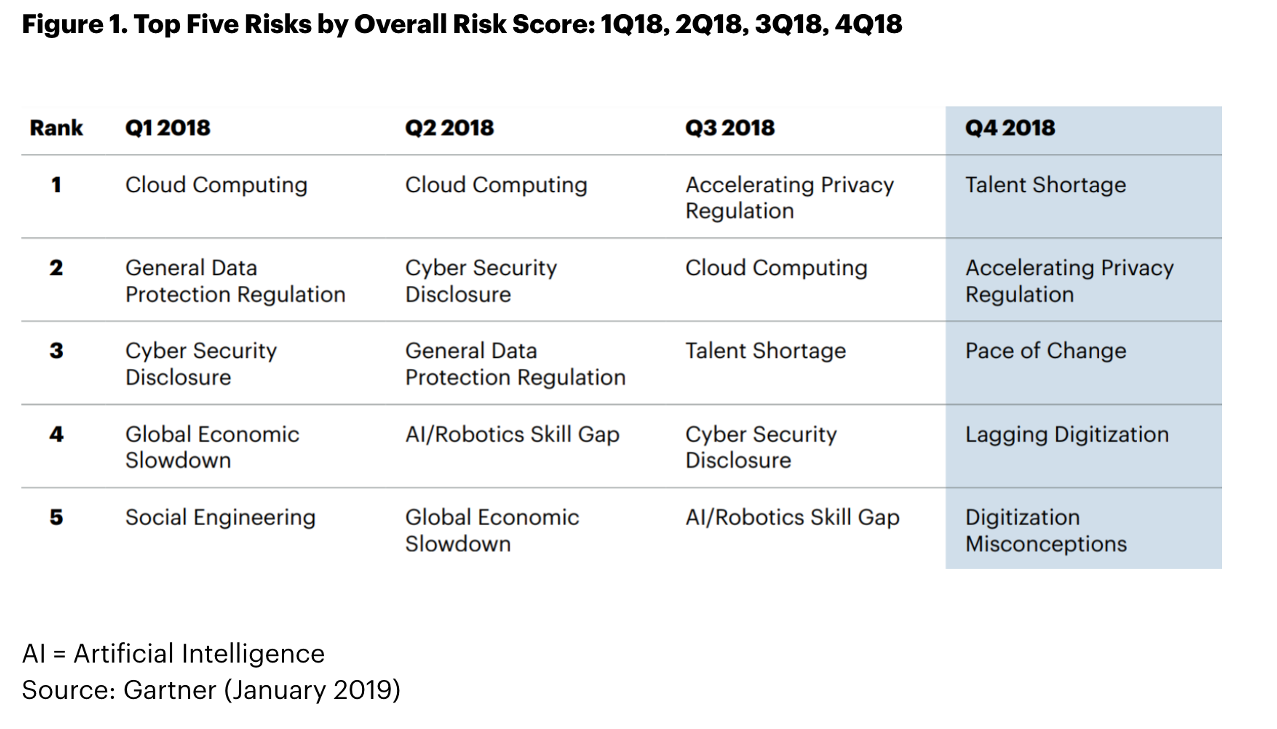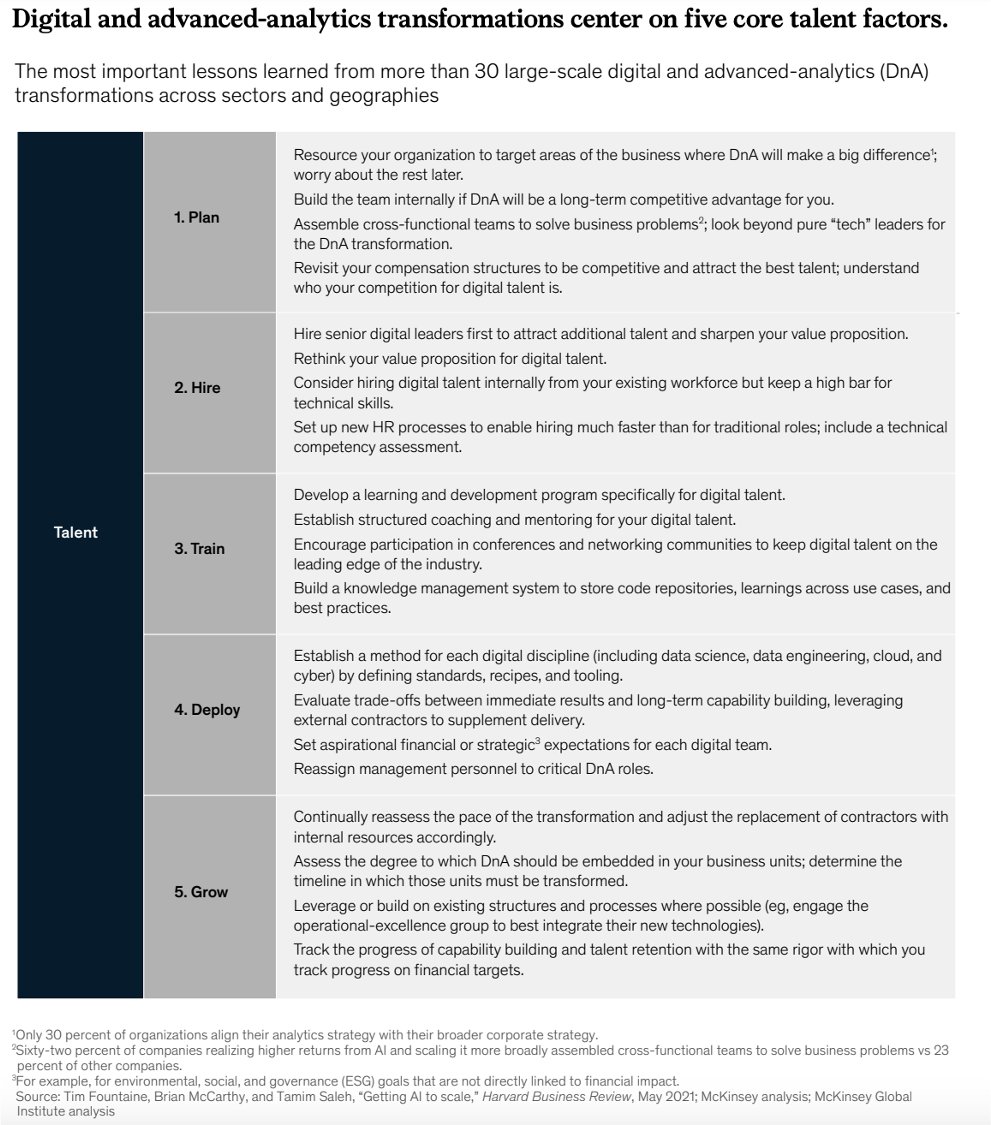Talent Gap

Business Emerging Technologies requires skilled & talented individuals.
- Bloomberg is hiring Chat-GPT experts on $295k+ salaries
https://www.efinancialcareers.com/news/2023/05/chat-gpt-prompt-engineering-jobs - Skilling the Future Workforce: How technology empowers higher-education students to succeed:
https://blogs.microsoft.com/eupolicy/2021/07/22/skilling-the-future-workforce-how-technology-empowers-higher-education-students-to-succeed/ - Five lessons from AI on closing quantum’s talent gap—before it’s too late:
https://www.mckinsey.com/capabilities/mckinsey-digital/our-insights/five-lessons-from-ai-on-closing-quantums-talent-gap-before-its-too-late - Is the UK's Digital Future in Danger?
https://download.intel.com/newsroom/2022/geos/emea/intel-supercharge-future-digital-skills-report.pdf - Is There a Shortage of Developers? Developer Shortage Statistics in 2022:
https://codesubmit.io/blog/shortage-of-developers/ - CIOs in 2023 Want to Know: Who’s Got Talent?: https://www.wsj.com/articles/cios-in-2023-want-to-know-whos-got-talent
- Digital transformations: The five talent factors that matter most: https://www.mckinsey.com/capabilities/mckinsey-digital/our-insights/digital-transformations-the-five-talent-factors-that-matter-most
- Flexibility, the best ability: Reimagining the tech workforce:
https://www2.deloitte.com/us/en/insights/focus/tech-trends.html#flexibility-the-best-ability - Women in tech: The best bet to solve Europe’s talent shortage: https://www.mckinsey.com/capabilities/mckinsey-digital/our-insights/women-in-tech-the-best-bet-to-solve-europes-talent-shortage
Five lessons from AI on closing quantum’s talent gap—before it’s too late
Talent Gap
58% are increasing emerging technology investments
- The demand for tech talent is increasing rapidly.
- 58% of IT executives say that they already have increased or are planning on increasing emerging technology investments.
- Unfortunately, the market probably can’t respond to this increase in demand.
50% of recruiters: The #1 challenge is finding technical talent
- Tech talent shortages are making it increasingly difficult to recruit the right employees.
- Nearly half of recruiters say their number one challenge is finding qualified technical candidates.
64% of IT executives: Tech talent shortages hinder adoption of emerging technologies
- 64% of IT executives say that the shortage of tech talent is a major barrier to the adoption of emerging technology.
- The most affected areas are network, security, digital workplace, IT automation, computer infrastructure and platform services, and storage and database systems.
AI/Machine Learning are the most sought after technical skills
- Web development, DevOps, and AI/Machine Learning are the technical skills most sought after by hiring managers.
Technology Executives Priorities for 2023
- Talent, talent, talent. CIOs say that scooping up and keeping talent will be a key priority for them.
- Finding top tech talent in the marketplace has gotten more competitive, developing the talented workforce we already have has become even more critical.
- CIOs are trying to bring more work in house rather than relying on vendors, adding that there is a clear benefit to having the skills and knowledge within the company.
- CIOs don’t believe vendor management is really the skill that a young college grad is desiring to get.
Python: The most popular programming language
- The most popular programming languages are JavaScript, Java, and Python.
Chief information officers are augmenting recruiting efforts with new models like upskilling, job sharing and rotations as well as raising salaries and offering perks to retain workers with some tech leaders say that although there is talent available, there is a skills mismatch and a clear shortage of available candidates with expertise in various domains.
- “As we face an ongoing IT skills shortage, companies that prioritize workplace culture, diversity and meeting equity will likely come out ahead.” Ron Guerrier, CIO
- “Without the right people, the right technology is useless.” Penelope Prett, Accenture Chief Information, Data and Analytics Officer
- With technical skills becoming outdated every few years, hiring for current needs is not a winning long-term strategy. Rather than competing in scarcity, consider an abundance frame, wherein technology talent can be curated, created, and cultivated.

How Do You Create A Quantum Ready Workforce?
While quantum has the potential to revolutionize various industries, a trained workforce is necessary to make these advances possible. According to David Stewart, managing director of the Purdue Quantum Science and Engineering Institute, members of the Federal Quantum Economic Development Consortium are having difficulty finding enough qualified people to do the required work.
As quantum technology continues to evolve, it is essential to have a workforce that is prepared to utilize and harness its power. Quantum computing, in particular, has the potential to change the way businesses operate. To ensure that quantum computing can reach its full potential, it is crucial to have a workforce that is equipped with the necessary skills.
Step 1: Comfortable with Quantum Technology
One key way to do this is by ensuring that employees are comfortable with quantum computing concepts and can apply quantum algorithms to business problems. Quantum technology will play an increasingly important role in business, and those who can harness its power will be well-positioned for the future.
Step 2: Develop a Quantum Strategy
Another key step is for businesses to develop a quantum strategy. This includes understanding the competitive landscape and developing a plan for how quantum computing can be used to improve the business. This quantum strategy should be tailored specifically to the company and it's unique needs.
Step 3: Invest in Training
Investing in quantum computing training for employees is another important step. This will ensure that they can effectively use quantum computers and understand how to apply quantum algorithms to business problems.
Conclusion
As quantum technology continues to evolve, businesses need to begin preparing their workforce for this quantum future. Quantum computing has the potential to change the way businesses operate, and those who are prepared with the necessary skills will be well-positioned for success.
Digital Transformations: The Five Talent Factors That Matter Most
Creating a successful digital and advanced analytics program is no simple task. To guarantee success, prudent decisions must be taken regarding talent and technology - two major determinants of whether your transformation will succeed or fail. Yet before spending on new technology, leaders ought to consider investing in the people who can make that technology work. You must have a complete understanding of how decision-making on these items has enhanced (or hampered) other projects, to make the right choices for your organization. According to McKinsey & Company, there are five core factors to consider.
Factor 1: Focus on appointing experienced digital executives
Performance is ultimately determined by an organization's talent and technology strategies combined with the capabilities of its leadership. Up to half of a group’s performance can be attributed to individual leaders, who guide the future of their organization through screening applicants, establishing technical standards, and setting expectations for how work should be completed. Choosing those individuals capable of driving digital transformation will define success; when the right people are in place it creates a ripple effect that permeates throughout subsequent hires. If organizations try to fast-track their early hiring, the overall reputability and success of their programs will be put at risk. Research has indicated that cutting corners can set back transformations by six months or more. To ensure you reach your desired outcomes on time, it is imperative to take all necessary steps throughout the recruitment process.
Factor 2: Reevaluate your offering to recruit digital talent
Are you equipped to attract top-tier talent? You must consider your local hiring market and available pool of skilled professionals. Although digital skills are not exclusive to any industry, candidates from other industries may be competing for similar positions in tech. To draw each candidate’s attention, appeal to their individual needs by ensuring a modern technology stack with access to development opportunities such as specialized training or educational conferences is offered within the company. Furthermore, it is essential to create an accurate representation of your tech culture: a blend of skillsets, mindsets, and work preferences are the key elements for constructing a flourishing company. Historically speaking, culture has been known as the most critical element preventing digital initiatives from achieving their desired impact. Thus, it's important to comprehend what employees experience daily to capture them meaningfully.
Factor 3: Recruit digital experts within your organization, adhere to rigorous technical criteria, and be realistic when it comes to teaching new skills
It is essential to recognize the potential buried in your organization when it comes to digital talent. To start, processes for technical roles should be based on competency evaluations rather than just looking over CVs and measuring leadership qualities. Simultaneously, not all digital products necessitate advanced skill sets - companies with a strong non-digital staff base can upskill some of their existing employees so that they cover as much as 70% of their demand for digital services. When evaluating whether to train an existing employee or recruit externally, it is essential to make decisions based on quantitative data like the amount of time needed for a candidate to gain full competency in their role. Businesses must be realistic regarding not only how many employees can undergo upskilling but also the duration of training and growth they need before reaching proficiency.
To foster growth and knowledge, businesses should offer internal hires the opportunity to learn and develop in their roles. By promoting from within, you also create a stronger interconnection between product/development teams and operations - something which is often neglected. Keep in mind that retraining personnel internally can be difficult so consider how quickly you plan on deploying projects before committing to upskilling your current IT staff as some positions may require specialized skill sets. If you decide to handle the process yourself, it makes sense to cultivate your existing talents. However, keep in mind that a two-month training program is not enough for someone with no experience—it can take years of practice for them to become excellent data scientists or technical architects. To give your program the boost and traction it needs, avoid taking shortcuts by hiring only highly proficient individuals from the start.
Factor 4: To cultivate and sustain digital expertise, construct an educational program specifically designed for the development of digital talent
With technology evolving at breakneck speed, it is becoming more difficult to maintain current skills through traditional educational programs. To make sure our teams stay ahead of the curve and remain competitive in this ever-changing landscape, we must explore alternative ways of developing vital abilities beyond standard instructional formats. To foster the growth and entrenchment of skills, organizations should combine active job training with organized learning programs. Many successful businesses recognize that these types of environments provide workers with opportunities to learn on their terms. Employees comprehend the importance of sharpening their knowledge continually, so there must be a variety of methods for them to do just that.
For individuals with great potential, the key is to offer them incentives and opportunities, but not coddle them with too much additional education. A structured learning curriculum can certainly fill in knowledge gaps and provide a jumpstart on their longer-term journey of self-improvement. Enterprises must establish cohort or role-specific learning journeys from top management down; these should combine both online courses and physical instances so they can learn at their speed (fundamentals) while also engaging in group projects (interactive).
Factor 5: Carefully consider the benefits and drawbacks between achieving short-term results and measuring long-term capacity building
Instilling new competencies and culture is essential for the success of any transformation. Although contractors can facilitate the initial steps of a transition, an effective plan must guarantee successful capability exchange and responsibility to achieve lasting change.
Conclusion
To ensure success in digital transformation, businesses need to invest in programs that foster technology literacy and also provide education and training opportunities. This will bridge the talent gap between individuals possessing emerging technology skills such as AI, ML, and blockchain. Additionally, businesses should establish cohort or role-specific learning journeys from top management down while providing incentives and opportunities to their employees along with a structured learning curriculum to fill knowledge gaps. By doing this they can stay ahead of the curve when it comes to technology evolution and remain competitive in an ever-changing digital transformation landscape. With these steps taken into consideration, organizations have greater chances of achieving successful capability exchange which leads to long-term change within their digital initiatives.



